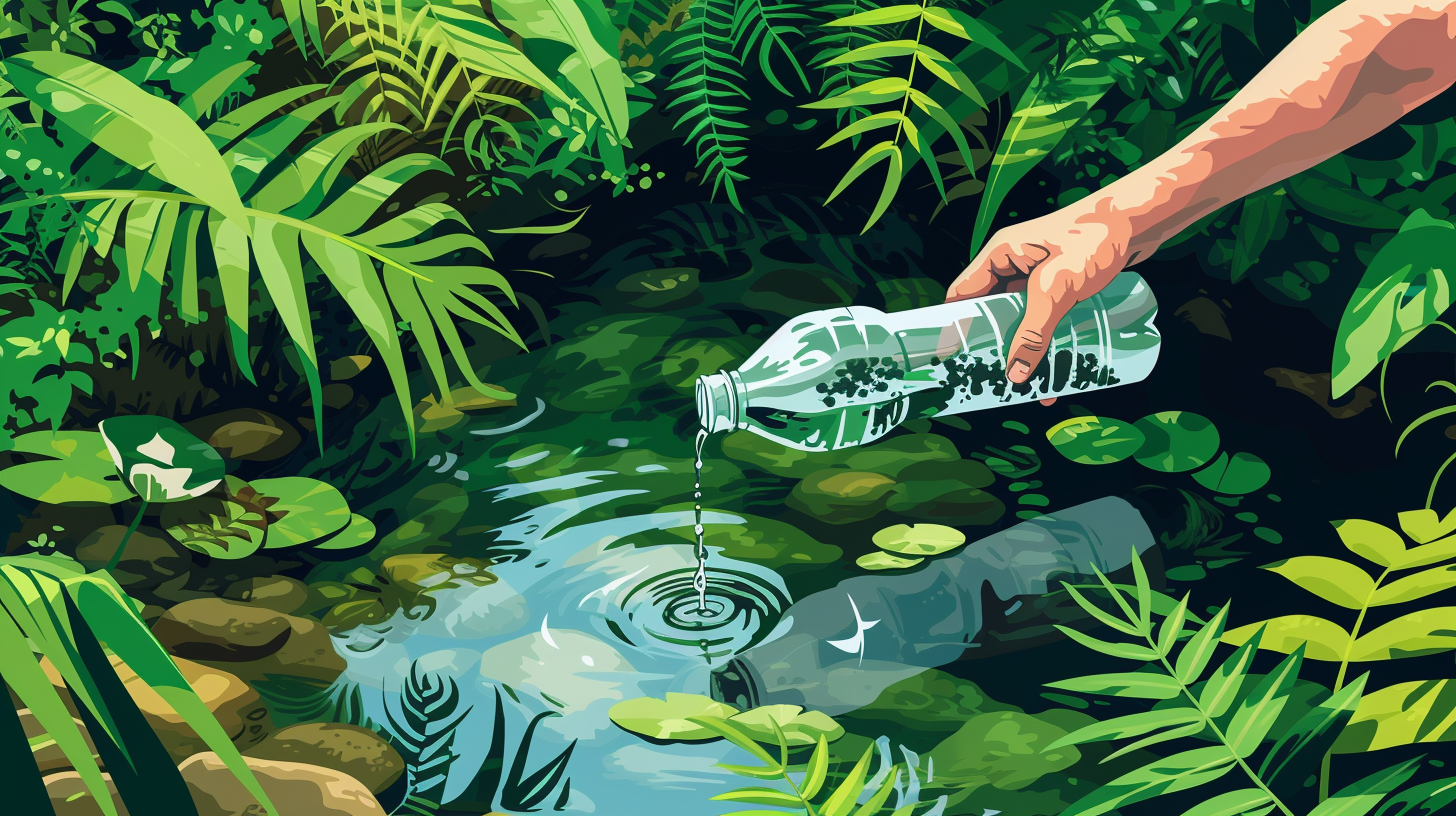As the saying goes, ‘A stitch in time saves nine,’ and this couldn’t be truer when it comes to preparing for SHTF scenarios, especially regarding water filtration.
You’re likely aware that finding a reliable source of clean water is paramount, but with the myriad options on the market, making the right choice can feel overwhelming. You’ll need to weigh factors like the specific needs of your water source, the cost versus benefit of the filter, its effectiveness in removing contaminants, and not to mention its durability and portability.
As you consider these elements, you’ll find there’s a delicate balance between functionality and practicality that must be achieved to ensure you’re well-prepared for any situation.
By focusing on these key aspects, you’re on the right path to selecting a water filtration system that won’t just meet your needs but could potentially save lives.
Stick around, and we’ll explore how to navigate this crucial decision-making process, ensuring you’re equipped with the knowledge to choose wisely.
Key Takeaways
- Understanding the different types of water filters and their purification capabilities is crucial when choosing a water filtration system for SHTF scenarios.
- Consider the durability and lifespan of the filter, as well as its filtration capabilities and elements used, to ensure a reliable water source.
- Purification technology varies, with filters using activated charcoal, carbon block, hollow fiber membrane, gravity filtration, purification tablets, or chlorine dioxide for different types of contaminants.
- Look for filters that meet certification and testing standards, have lower micron ratings for better contaminant removal, and combine multiple technologies for comprehensive filtration.
Understanding Water Risks
To effectively mitigate risks, it’s crucial you understand that water contaminants vary widely in size, making the choice of filter micron rating a pivotal decision. When facing a scenario where your water supply is contaminated, knowing the capabilities of different water filtration systems helps you select the best water filter for your needs. Micron ratings, whether Nominal Micron Rating (NMR) or Absolute Micron Rating (AMR), are key indicators of a filter’s ability to purify water by removing specific contaminants.
Portable water filters are invaluable for emergency preparedness, providing a means to purify water wherever you are. Each filter that removes contaminants does so based on its micron rating; the lower the number, the finer the filtration. It’s essential to consider the types of contaminants present in your water. For instance, carbon filters excel at removing herbicides and pesticides, addressing specific risks your water supply might face.
Types of Water Filters
Now that you’re familiar with the various types of water filters, it’s crucial to consider their durability and the technology behind their purification capabilities.
You’ll want to weigh the pros and cons of each system to find the best fit for your needs in an SHTF scenario.
Understanding these aspects will ensure you’re well-prepared to choose a water filtration system that can withstand the demands of any emergency.
Filter Durability Considerations
When choosing a water filter for SHTF scenarios, it’s crucial to consider the filter’s durability and lifespan to ensure it meets your needs. Here are key considerations:
- Lifespan and Capacity: Look for survival water filters like the Lifestraw Family, boasting an 18,000-liter filter life, ensuring you have gallons of purified water for extended periods.
- Durability Features: Opt for water filtration systems with robust constructions, such as Royal Berkey Gravity Fed’s stainless steel design, ideal for harsh conditions.
- Longevity: Filters like the Sawyer MINI offer a staggering 100,000-gallon filter life, ranking them as the best survival water filter for reliability.
- Filtration Capabilities: Consider the Katadyn Pocket Water Filter’s 13,000-gallon capacity and its silver-impregnated ceramic element, which enhances durability and ensures safe, filtered water.
Selecting a water purifier with these features guarantees a reliable water source during emergencies.
Purification Technology Comparison
Having covered the importance of filter durability and lifespan, let’s examine the various purification technologies and how they compare in removing different contaminants.
Activated charcoal and carbon block filters excel at removing chemicals due to their porous nature, effectively trapping contaminants.
Hollow fiber membrane filters, with their Nominal Micron rating, are adept at blocking microorganisms, making them a reliable choice for biological safety.
Gravity filters, a popular option among top filter brands, leverage the power of both activated charcoal and physical filtration, offering comprehensive purification.
For chemical treatment, Purification Tablets and Chlorine Dioxide provide an added layer of safety by killing pathogens that may slip through physical filters.
Each purification system, from the compact LifeStraw to the robust Berkey, presents a unique approach to ensuring water safety.
Evaluating Filter Effectiveness
When you’re evaluating the effectiveness of a water filtration system, it’s crucial to look at how well it removes contaminants, its lifespan, and the maintenance it requires.
You also need to check if it meets certain certification and testing standards to ensure reliability.
This will help you pick the best filter for your specific needs, ensuring you have access to clean water in any scenario.
Assessing Contaminant Removal Rates
To effectively assess contaminant removal rates and evaluate filter effectiveness, it’s crucial to understand micron ratings. Here’s what you need to know:
- Absolute Micron Rating (AMR) ensures no pore size larger than the rated size, crucial for catching tiny viruses and chemicals.
- Nominal Micron Rating (NMR) captures a certain percentage of particles, showing how well filters remove larger contaminants like bacteria and protozoa.
- Filters with lower micron ratings typically catch more, including Giardia and Cryptosporidium.
- Water purifiers combining multiple technologies are best for comprehensive contaminant removal, including heavy metals like lead.
Choosing which water filter is right means assessing these ratings to match your specific needs.
Filter Lifespan and Maintenance
After understanding the importance of micron ratings for catching various contaminants, it’s equally crucial to evaluate the lifespan and maintenance needs of your filter for sustained effectiveness.
High-capacity systems like Berkey, known for their long-lasting black filters, spotlight the significance of filter lifespan. A filter system capable of purifying 100,000 gallons before needing maintenance or replacement filters minimizes your efforts in SHTF scenarios.
Opt for water filtration systems with replaceable or cleanable carbon filters to extend their usefulness. Assessing the ease of maintenance and the availability of replacement parts ensures your filter will help provide clean water without interruption.
Certification and Testing Standards
Ensure your water filter has certifications from reputable organizations like NSF, EPA, or ANSI to confirm its effectiveness in removing contaminants. Certification and testing standards offer peace of mind, especially in emergency situations when access to clean water is critical.
Here’s what to look for:
- Micron Rating: Ensure the filter is rated for the size of contaminants you’re concerned about, including bacteria and viruses.
- Capabilities: Some filters, like the Berkey, are known for removing a wide range of contaminants.
- Specific Contaminants: Check if it can handle the contaminants present in your potential water sources.
- Proven Track Record: Opt for filters that are known for reliability and durability, ensuring you have access to clean water when you need it most.
Filter Durability and Maintenance
Consider the durability and maintenance needs of your water filter carefully, as they’re key for ensuring long-term reliability in survival situations. When you’re choosing the best portable water filter, don’t just look at how well it can filter the water; think about how long the filters last and what it’ll take to keep the system running smoothly.
You’ll want water filters like the Sawyer Mini or Big Berkey water filter, known not only for their ability to purify water efficiently but also for their rugged construction. These filters are designed to withstand tough conditions, making them ideal for when you need to filter water in the wild. The Royal Berkey, for instance, offers high filter durability and maintenance ease, ensuring you have access to clean water without constant worry about filter replacement.
Also, consider how easy it’s to maintain the filter. Can you clean it easily? Are replacement parts readily available? A water filter that’s difficult to maintain can become a liability. Opt for water filters that prioritize durability and low maintenance, ensuring you’re always prepared, no matter the situation.
Capacity and Flow Rate
While assessing a water filtration system’s durability and ease of maintenance is critical, don’t overlook the importance of its capacity and flow rate to meet your survival needs. Finding the right balance between these two aspects can ensure you have a reliable source of clean water in SHTF scenarios.
Here’s what you need to consider:
- Capacity Matters: The capacity of your water filter indicates how much water it can handle before needing a replacement. A higher capacity is crucial for a Family water storage plan, ensuring you have enough clean water for everyone.
- Flow Rate is Key: The flow rate determines how quickly your water gets filtered. In emergency situations, a faster flow rate means quicker access to clean water from any water source.
- Balance is Essential: A great filter balances a high capacity with a fast flow rate, making it the best option for long-term survival situations.
- Consistency Over Time: Ensure the filter maintains a consistent flow rate over time, especially important when access to clean water is critical for your survival.
Choosing a water filtration system with the right capacity and flow rate can significantly impact your ability to thrive in SHTF scenarios. Keep these factors in mind to select the most effective solution for your needs.
Cost-Benefit Analysis
When evaluating a water filtration system, it’s crucial to weigh the costs against the benefits to determine if the investment is worthwhile. Cost-benefit analysis plays a pivotal role in guiding you towards the right water filter, especially in SHTF scenarios where clean water is essential for survival.
Considering the effectiveness, durability, and functionality of options like the Jerry Can water filter, personal water filter, or portable filters is key.
These filters will remove harmful bacteria and viruses, purifying the water and making it safe to drink. However, the initial investment might seem steep. By calculating how many gallons of water you can purify over the filter’s lifespan versus the cost of purchasing bottled water, the long-term value becomes apparent.
Emergency water filters, designed to meet specific needs, can offer peace of mind that’s hard to quantify. The ability of a water filter to reliably provide clean water during emergencies justifies the upfront cost.
Ultimately, the cost-benefit analysis aids in making an informed decision, ensuring that the chosen water filtration system offers the best protection and value for your needs.
Practical Usage Tips
How do you ensure your water filter meets the unique challenges of SHTF (Shit Hits The Fan) scenarios? Selecting the best water filtration system isn’t just about buying the most expensive option; it’s about understanding your specific needs and how different water filters can meet them. Here are some practical usage tips that could make the difference:
- Adaptability: Ensure your filter might work in various environments. A pump filter, for example, should be able to filter water from nearly any source, pushing water through the filter effectively.
- Portability: Consider the size and weight of the filter. It’s crucial that you’re able to carry it easily, especially in situations where mobility is key.
- Durability: Check if the filter is built to last. It should withstand tough conditions, ensuring you can rely on it when you need it most.
- Maintenance: Understand the life of the filter and what it requires to keep it running. Some filters might need backflushing or the addition of unscented chlorine to maintain effectiveness.
Conclusion
Choosing the best water filtration system for SHTF scenarios means weighing your needs against what’s available. Look for a filter that effectively removes contaminants, is durable, and easy to use. Consider its size and versatility for portability and multiple scenarios.
Balance the cost against the benefits, and pay attention to capacity and flow rate. With the right filter, you’ll ensure safe drinking water, a critical component of survival in any emergency situation.





